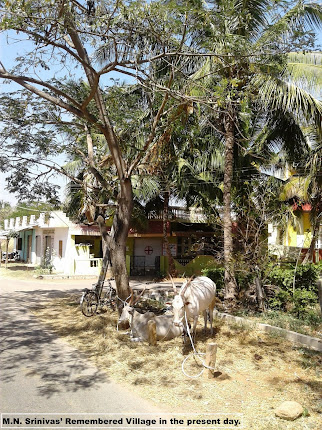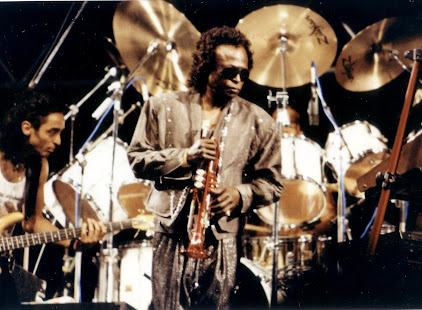On Reading M.N. Srinivas' 'The Remembered Village'
In the early 20th century, the Jatav caste of Uttar Pradesh, part of the traditionally 'untouchable' Chamar caste group, aimed to rid themselves of this status and its associated social, economic and political hardships, by claiming that their perceived caste position was merely an accident of history. In fact, they claimed, they were actually Kshatriyas. They traced descent from the survivors of the war between the Brahmin saint Parashurama and the Kshatriyas, who were defeated and forced into exile, eventually becoming Jatavs.
The Jatavs also emphasised certain cultural elements as proof of their ancestry, such as the practice of firing a cannon at weddings and their gotra system of descent, both of which they shared with the Kshatriyas. They formed their own caste panchayats and petitioned the British government to declassify them as Chamars, in order to legitimise their claim of being Kshatriyas; this declassification was delayed because of the outbreak of World War II. They began to participate more actively in the political process, and won several major political seats in Agra, although this was not viewed favourably by the upper castes.
This is an example of what the Indian sociologist M.N. Srinivas refers to as Sanskritisation. This is the process of a lower caste group or part of the caste group adopting the traditions, customs, occupations and social practices of an upper caste, in order to be accepted as members of the upper caste and reap the socioeconomic benefits associated with a higher status.
This process is also seen in the case of some tribal or non-Vedic cultural groups, who may adopt Vedic customs and rituals in an attempt to be accepted as upper-caste members of society. However, sociologists like Virginius Xaxa have also said that the process of tribals assuming a particular caste status in mainstream society cannot be taken as a direct parallel to Sanskritisation.
Srinivas developed his ideas in his study of the Kodava community of Karnataka, where he found that the influence of the Puranas had compelled many people to equate local nature gods with Shiva, thereby Sanskritising the local beliefs. The locals had also made attempts to reconcile these new religious beliefs with their consumption of pork and alcohol, both of which are considered taboo for upper-caste communities, by explaining that the Hindu gods lost their caste as they travelled over the lagoons of the Malabar coast.
However, the reference groups for the process of Sanskritisation need not be the upper or twice-born castes. In a later book, The Remembered Village, Srinivas chronicles his ethnographic study of a village near Mysore in Karnataka, where the Vokkaligas, a subcaste or jati belonging to the Sudra or peasant class of the varna system, were the most prominent. As such, they held political power in the village, and the Dalit community, though spatially separate from them, attempted to take on their high status in society. For example, a family belonging to a Dalit group traditionally associated with toddy-tapping, had prospered and become landowners, and now wanted to be treated at par with the Vokkaligas.
While the Sanskritisation of people of a caste group may take time, as other groups must accept their claimed status, an interesting aspect of caste dynamics in India is the Sanskritisation of various cultural elements. For example, the classical dance form Bharatnatyam is derived from the Sadir dances performed by the lower-caste devadasis at various temples, and was modified by the dancer Rukmini Devi Arundale in an attempt to remove any perceived eroticism in the Sadir dances and make them more palatable to the upper castes, of which she herself was a member.
However, this led to the dance itself being confined to these upper castes, and modified in ways that the original dancers did not have the resources to learn, thereby excluding them. Even now most platforms and awards for Bharatnatyam dancing are largely given, not to members of the original castes that originated and performed the dance form, but rather, to those who culturally appropriated the dance form through the process of Sanskritisation. A similar practice occurred in the cases of Kuchipudi and Mohiniattam.
Ultimately, however, the thesis of Sanskritisation has many flaws. To begin with, it promotes the normative idea that all caste groups must aspire to be like the 'twice-born' castes in terms of culture and occupation, rather than the more egalitarian idea of treating all caste groups as equal and encouraging pluralism in culture. It does not view the practice of formerly 'untouchable' groups rejecting their former occupations as a protest against ingrained exploitation and dehumanisation, but rather as an attempt merely to mimic the twice-born castes.
Moreover, the process of Sanskritisation does not necessarily lead to an abolition of the caste system in India or the end of caste discrimination. In fact, anecdotal evidence suggests that it may actually have the opposite effect, as the upper castes see attempts at Sanskritisation as a potential threat, while members of the lower castes may see those who choose to embrace the process of Sanskritisation as traitors. For example, the upper-caste Thakurs in Uttar Pradesh have been known to resort to physical violence to keep the Chamars in what they thought was their place.
At the same time, many Dalits themselves may resent efforts by others in their caste group to elevate their status and mimic those who were responsible for their oppression. M.N. Srinivas himself cites, in The Remembered Village, an incident in which a Dalit labourer assaulted a man belonging to a supposedly lowly metalworking caste, who was striving to imitate the influential high-caste people in the village by wearing red high-toed slippers in the street.
The socioeconomic forces driving the process of Sanskritisation may also lead several groups towards Westernisation instead, as was suggested by A.P. Barnabas in Economic and Political Weekly as early as 1961. He said that Westernisation had brought increased industrialisation, greater communication, new occupations, and better education, all of which would perhaps be more powerful in raising the socioeconomic status of Dalit, Bahujan and Adivasi individuals than the effects of Sanskritisation could be.
Sanskritisation itself has not been seen to lead to a direct improvement in the socioeconomic status or level of discrimination faced by lower-caste groups. The story of the Jatavs is perhaps particularly illuminating in this regard. During the Second Round Table Conference, when an argument began between Mahatma Gandhi and Dr. B.R. Ambedkar with regard to the necessity for reservation in governance and education, the Jatavs stood by Ambedkar, as their own experience had shown them that Sanskritisation did not necessarily lead to acceptance. They in fact reclaimed their Scheduled Caste status, and the sociologist Owen Lynch writes that "The change is due to the fact that Sanskritisation is no longer as effective a means as is political participation for achieving a change in the style of life and a rise in the Indian social system, now composed of both caste and class elements."
Image credits: By Prof tpms - Own work, CC BY-SA 4.0, https://commons.wikimedia.org/w/index.php?curid=56230521



Comments
Post a Comment